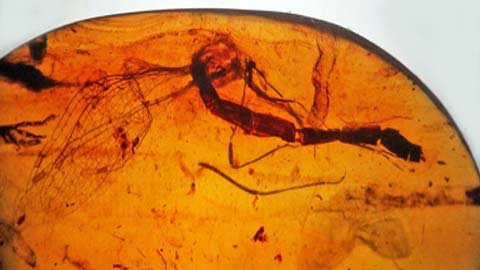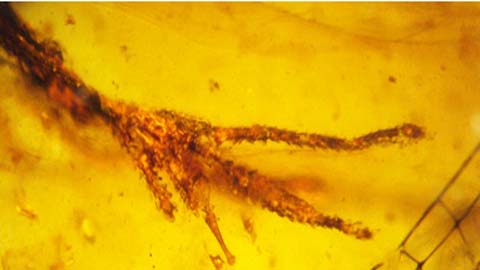
Fossil dragonflies "lost their heads" in amber. (Photo: George Poinar / OSU)
About 97 to 110 million years ago in the early Cretaceous period in a forest in Myanmar's Hukawng Valley - the time when wandering dinosaurs dominated the earth, there was a lizard hungry, ambushing the child. dragonfly served for its lunch. The lizard rushed at a fast speed and bit off the bad dragonfly's head.
If the story ends here, there is nothing worth saying. In the moment the lizard flipped and enjoyed its prey, it was unfortunate, both it and the rest of the dragonfly were attached to the sap, their soft bodies buried in yellow amber and preserved for to this day.

Fossil foot and tail part of the gluttonous lizard. (Photo: George Poinar / OSU)
According to the Science Daily magazine , this is the oldest dragonfly fossil found in amber, but previously fossil dragonfly specimens have been discovered in rocks dating to 300 million years, with wingspan. Giant scooters, up to more than 0.9 meters.
Poinar said, today, lizards often prefer the " headhunt " of dragonflies, and the dragonfly itself is a greedy predator, it eats insect larvae and mosquitoes. species of dragonflies are very beautiful, have attractive colors and are the favorite objects of insect collectors.
 Discovered an ancient centipede fossil 99 million years old
Discovered an ancient centipede fossil 99 million years old Discovered bat-like dinosaurs in China
Discovered bat-like dinosaurs in China Discovered a 200-year-old bronze cannon of the coast
Discovered a 200-year-old bronze cannon of the coast Discover 305 million-year-old spider fossils
Discover 305 million-year-old spider fossils